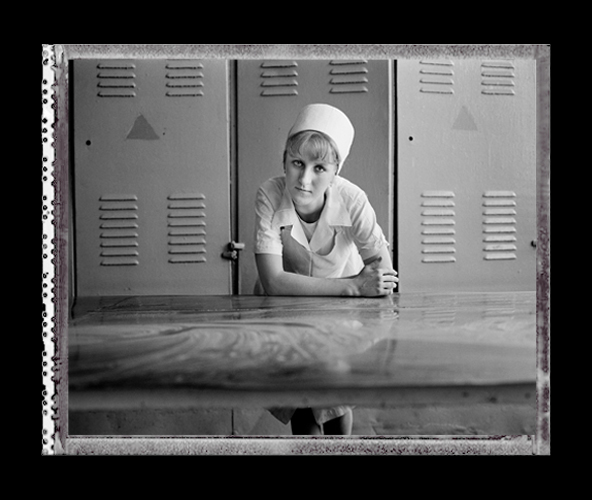When living in Moscow, I was amazed at the women I saw every day doing road work, heavy lifting, and painting sky-risers. I was afraid to approach them to ask for a photograph. They were tough, and busy, and cold. But to my surprise, the women were proud to be asked. In fact, they were open and friendly, a rarity on a Moscow street.
The working women I photographed on the street were living testimonies to the Russian symbols for strength and composure: Rossiaya-Matushka, Mother Russia; Rodina-Mat, the Motherland; Tovarka, woman comrade.
One of the themes that intrigued me about these women was their strong sense of community. I frequently heard them laughing among themselves and sharing inside jokes in the way that only long-time partners do. It was this topic that inspired me to document not only the working woman, but also her relationship with others. To do this, I needed to witness them in a place where they could feel safe and connected.
The answer was to gain access to factories around Moscow, but I knew this in itself would be a challenge. It was 1999 and the factories were still very soviet in their attitude and internal laws of conduct. An American entering these places was still considered a threat. With the help of a friend with high up connections (a strong Russian woman herself), I was able to get an inside look at factories which seemed frozen in time; a soviet time. Inside the factories were frequently three generations of women working side by side. The women had a shared history, a strong sense of place and bonded friendships.
Despite the contemporary period, the photographs unintentionally have the feel of socialist realism art, which glorifies the common worker and emphasizes communal cooperation in soviet life and work. There is certainly an aspect of the images that portrays pride in work and a spirit of patriotism and contentment. I was not interested in propaganda, however, but rather the micro society created by the factory for these women and their personal satisfaction within that framework.
The women I met who worked outside in construction did not seem as content. They were cold...or, they were hot. They frequently lived miles from their families, and they were physically tired. But they too had built strong communities around themselves. I couldn’t help but admire the female construction workers living together in a partially built cement building. One such group invited me for tea while taking a break from plaster. They boiled water over a camp stove and showed me photos of their children at home miles away. These were women who, despite their financial predicament, had created a society, a sense of self and a place within a family. These were women to be admired. Rossiaya-Matushka. Rodina-Mat. Tovarka.




























































